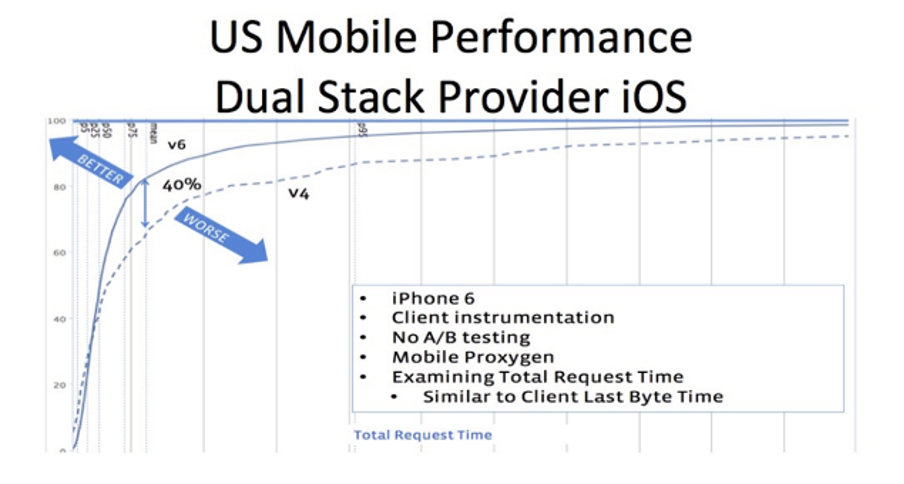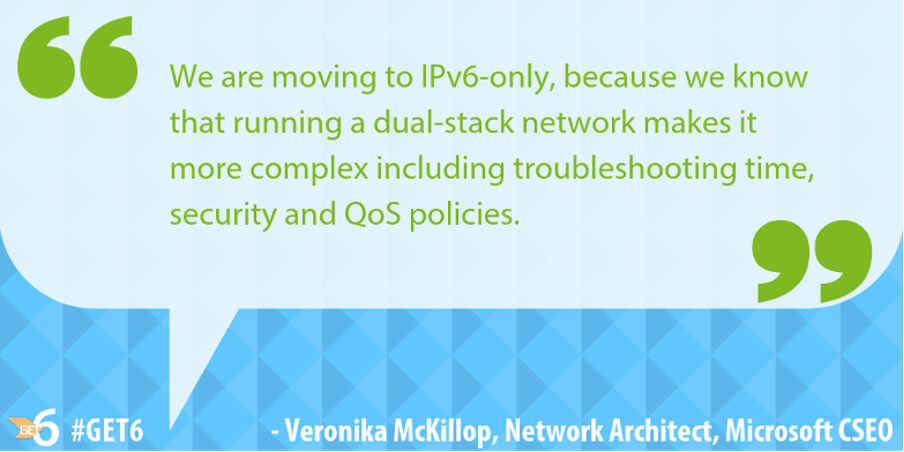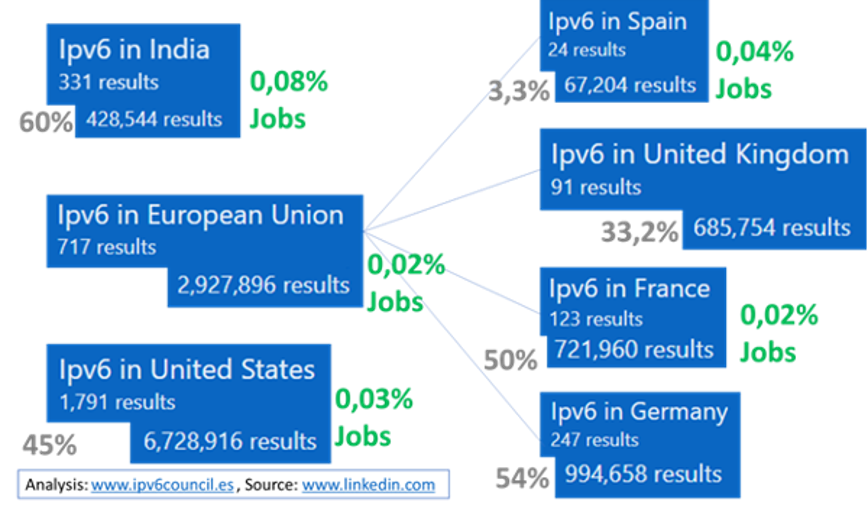The adoption of IPv6 can represent an impediment and extra costs for companies necessary to continue operating, without any other return at the business level. The most important thing is to start as soon as possible, take into account the benefits it will bring and the lessons for efficient evolution.
Why IPv6 can be business?
We are changing the rules of the Internet game. And in this case of IPv6, Darwin's theory of evolution really applies: the companies and organizations that adapt best to changes survive. If we do not start with IPv6 now, we will be developing platforms that do not support new functionalities and that will soon become obsolete.
The companies that will have a competitive advantage are those that aim at innovation. In the IETF (Internet Engineering Task Force, a working group where Internet standards are set) all innovations are being defined with IPv6.
For example, new IoT (Internet of Things) developments in the home are only with IPv6. There are technology giants that only use IPv6 for their home devices, through the Matter and Thread/6LowPAN standards.
Those that apply innovation in network automation through IP segmentation also have an advantage. The IETF has defined an end-to-end mechanism (SRV6) that allows segmentation down to the host in the cloud. In these cases, IPv6 must be used with no other possible alternative.
Another example is web 3.0 that identifies digital assets that we can transact. There is a working group – Blockchain BSV – that supports peer to peer transactions without intermediaries, based solely on IPv6. That is why having IPv6 means betting on innovation and emerging solutions.
Value added.
All of these companies will generate enough efficiencies, added values or competitive advantages that will allow this evolution to be identified as an opportunity, also at the business level. This is not going to fall from the sky, but rather it means taking risks to explore the new model first-hand and develop competitive advantage first.
Ultimately, it is about following the IETF model when it decides, as we have described previously, to develop the IoT Internet for low-power mesh networks (LowPANs) only with IPv6 and not with IPv4.
Already in 2015, companies like Meta/Facbook identified that a practically IPv6-only corporate network is more efficient and allows them to better innovate (90% then, 100% today), as described in the article at the bottom of this diagram for the Internet Society (ISOC).

Reference: ISOC-2015: Facebook News Feeds Load 20-40% Faster Over IPv6 – Internet Society
They were in fact the first to perceive and announce that IPv6-activated mobile phones were browsing their services. The same path towards IPv6-only has been followed by other key players such as Microsoft.

Reference: IPv6 Council UK
It is difficult to quantify how much a company can lose if it does not deploy IPv6. In home IoT areas, all the majors are adapting to the IPv6 standard. In this area we are left out of the alliance of the most important. The cost of staying outside is very high. The later you do (the migration), the higher the cost will be due to investments in systems and platforms that will need adaptation.
How to improve business with the deployment of IPv6?
It has to have a common root, the training of human resources and the transversality of the organization. Only if the business strategy and marketing teams understand IPv6 can the organization succeed. Technical teams should not be left alone to fight for IPv6.
The company must be aware that it is not just an addressing issue, but that the IETF itself is already moving towards IPv6 in terms of innovation. Avoiding the cost of intermediate solutions is crucial (for example, use of address translators, use of overlapping private addresses, purchasing IPv4 addresses from brokers, etc.).
If we can shed some light on where the opportunities are going to be, we could take the following points into account:
-
The new ecosystems will be IPv6-ready or IPv6-only. As we have seen in the cases of home IoT and WAN network segmentation, it does not make sense to waste resources on backward compatibility that limits functionality and generates costs.
-
Scalability is a key point. As AWS is demonstrating, with IPv4 everything can be solved but sometimes it harms the scale-cost equation and it is better for us to go to IPv6-only models, even if the interactions with the rest are dual-stack.
-
The end-to-end connectivity with which the Internet was designed allowed for the innovation of a multitude of services. The existence of NATs has led to the development of complex technologies (NAT-traversal) for P2P services.
-
The absolute distribution of interactions and resources (P2P applied to models such as blockchain) and computing (Edge Computing) will require an architecture of microservices that, far from being all in the cloud (Cloud Computing), will be distributed in intermediate nodes (Edge Computing) and user terminals (low-code. No-code user generated servers). This distributed and highly interactive model can only be explored in IPv6-only environments, forgetting any limitations derived from the interaction with IPv4 elements.
-
Home and small business service models can evolve with Edge Computing architectures, the availability of dozens of subnets and millions of public addresses for terminals and quality segmentation or differentiated filtering for bidirectional or non-bidirectional interactions of said elements.
-
The Internet security architecture will be impacted by the use in practice of new protocols and mechanisms or those with a lower level of testing. Also due to the decrease in NATs, greater use of public addressing, change in aggregation and filtering techniques, ultra scalability of IoT and IP mesh networks, etc. All of this demands attention that many experts and security companies cannot dedicate today.
-
Finally, the acceleration of adoption at the corporate level will demand profiles of IPv6 experts in all the areas described in this article and also the creation of training, consulting and strategy resources. We can see this fact reflected in the employment trends that indicate greater demand in the regions with greater adoption..
:
Such dizzying change is more than a digital transformation, it is a transformation of the global Internet village. 40% of users already use it and there are tools available only in that new environment.

Reference: IPv6 Council España. Estudio basado en anuncios LinkedIN (Junio 2022)





